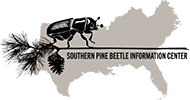Abstract
Native and nonnative insects and diseases can result in detrimental impacts to trees and forests, including the loss of economic resources and ecosystem services. Increases in globalization and changing human behaviors have created new anthropogenic pathways for long distance pest dispersal. In North America, literature suggests that once a forest or tree pest is established, the movement of firewood by the general public for recreational or home heating purposes is one of the primary pathways for its dispersal. Understanding human perceptions and behaviors is essential to inform the most effective strategies for modifying firewood and pest dispersal by humans. This scoping review seeks to assess trends and gaps in the existing literature, as well as patterns in behavior related to forest pest dispersal through firewood movement in North America. We identified 76 documents that addressed this topic to which we applied inclusion and exclusion criteria to select articles for further analysis. Twenty-five articles met the inclusion criteria and were categorized based on five identified themes: 1) insect incidence in firewood, 2) insect dispersal via firewood, 3) recreational firewood movement, 4) firewood treatments, and 5) behavior and rule compliance. The selected articles show trends that suggest that firewood movement presents a risk for forest insect dispersal, but that behavior can be modified, and compliance, monitoring, and treatments should be strengthened. This scoping review found limited research about western United States, Mexico, and Canada, various insect species and other organisms, regulation and management, awareness, and behavioral dimensions of firewood movement.
Keywords
Coleoptera, firewood movement, human behavior, invasive species, regulations
To read the full article please visit the link below:
Solano, Angelica, Shari L. Rodriguez, Leigh Greenwood, Kevin J. Dodds, and David R. Coyle. 2021. “Firewood Transport as a Vector of Forest Pest Dispersal in North America: A Scoping Review.” Journal of Economic Entomology 114 (1): 14–23. https://doi.org/10.1093/jee/toaa278.
